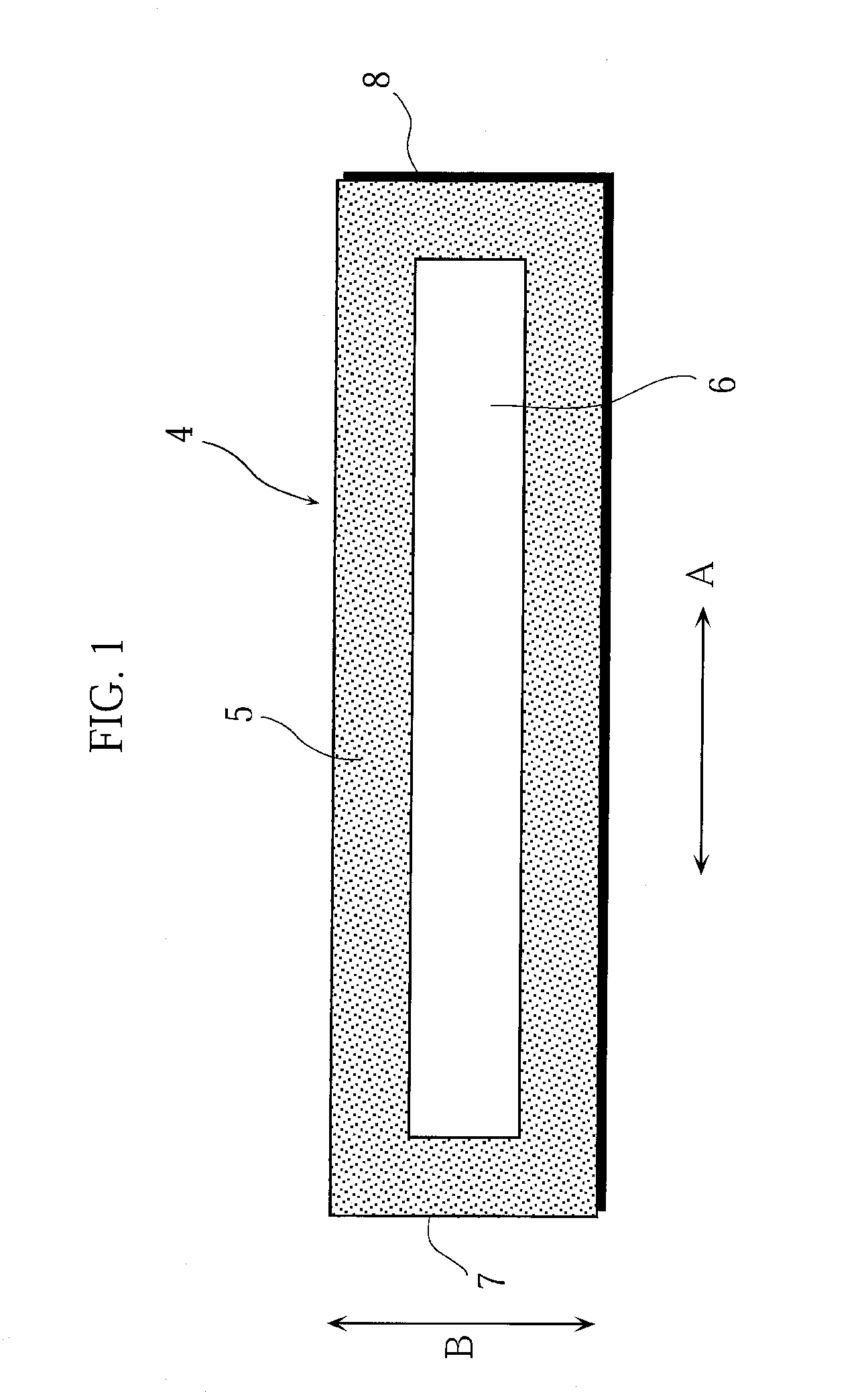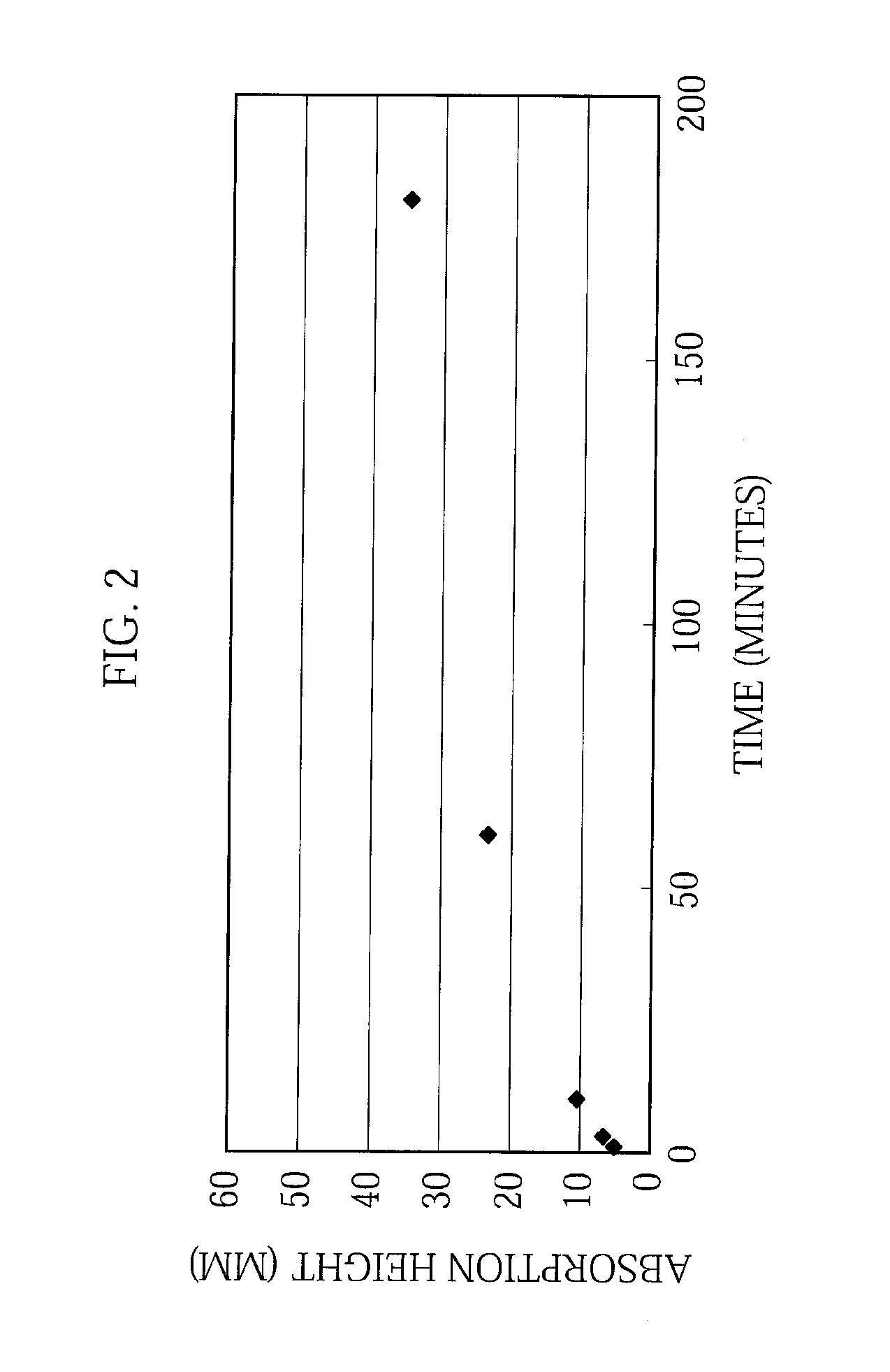Positive electrode for non-aqueous electrolyte battery, negative electrode for non-aqueous electrolyte battery, separator for non-aqueous electrolyte battery, and non-aqueous electrolyte battery using them
- Summary
- Abstract
- Description
- Claims
- Application Information
AI Technical Summary
Benefits of technology
Problems solved by technology
Method used
Image
Examples
embodiments
Preliminary Experiment 1
[0081]The condition of electrolyte impregnation in the wound electrode assembly was observed by varying the conditions of filling the electrolyte into the battery (i.e., without carrying out compression or decompression after filling the electrolyte) to evaluate the condition of permeation and diffusion of the electrolyte in an actual battery. The results are shown in Table 1.
(Battery Used)
[0082]The battery that was used to carry out this experiment had the same configuration as described in the “Best Mode for Carrying out the Invention” (hereinafter simply referred to as the “best mode”) above, except that the battery was a 18650-type cylindrical battery (in which the maximum height of the wound electrode assembly is 59.5 mm and the wound electrode assembly is a cylindrical shape, unlike a laminate battery in which the wound electrode assembly is in a flat shape) and that it used the positive electrode and the separator as described below. It should be noted...
experiment 2
Preliminary Experiment 2
[0095]Bearing in mind the results of the electrolyte permeation in the cylindrical electrode assembly shown in the preliminary experiment 1, a comparison was made about the electrolyte absorption conditions for the electrolyte in separators, for the purpose of identifying permeation and diffusion paths of the electrolyte. Specifically, an electrolyte absorbency evaluation and an air permeability measurement for separators were carried out.
Separators Used
[0096]The separators used in this experiment were: PE separators (one with a large pore size and one with a small pore size), a layered separator of PP(polypropylene) / PE / PP (in which PP film / PE film / PP film were bonded by thermocompression bonding), and a porous resin coated separator in which a porous layer made of PA was formed on a PE separator (the same separator as the one shown in the foregoing best mode). The separators were cut into a shape having a width of 1.5 cm and a length of 5.0 cm to make the ev...
experiment 3
Preliminary Experiment 3
[0111]Bearing in mind the results of permeation of the electrolyte in the cylindrical electrode assembly, shown in the preliminary experiment 1, a comparison was made about electrolyte absorption conditions for the electrolyte in electrodes, for the purpose of identifying permeation and diffusion paths of the electrolyte.
(Electrodes Used)
[0112]The electrodes used here were the same electrodes (positive electrode and negative electrode, samples 11 and 12 in Table 4) as described in the preliminary experiment 1 (the electrodes for 18650 cylindrical battery) and the negative electrodes having a porous layer formed thereon (samples 13 to 15 in Table 4). The electrodes have a width of 1.5 cm and a length of 5.0 cm.
[0113]The porous layer was prepared in the following manner. First, titania (TiO2, average particle size 31 nm) and PVDF were mixed at a mass ratio of 95:5, and thereafter, NMP was used as the solvent to prepare a slurry in which the viscosity was contro...
PUM
 Login to View More
Login to View More Abstract
Description
Claims
Application Information
 Login to View More
Login to View More - R&D
- Intellectual Property
- Life Sciences
- Materials
- Tech Scout
- Unparalleled Data Quality
- Higher Quality Content
- 60% Fewer Hallucinations
Browse by: Latest US Patents, China's latest patents, Technical Efficacy Thesaurus, Application Domain, Technology Topic, Popular Technical Reports.
© 2025 PatSnap. All rights reserved.Legal|Privacy policy|Modern Slavery Act Transparency Statement|Sitemap|About US| Contact US: help@patsnap.com



